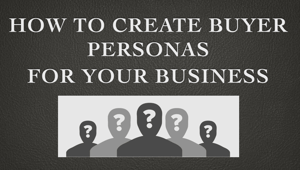 Business-to-business marketing has changed. In the old days, customers couldn’t use the Internet to evaluate buying options. They went directly to vendors for information. A vendor’s sales representatives cultivated relationships with their customers, and crafted their pitch based on individual customer’s needs and goals. Today, B2B customers usually complete more than 60% of their product and purchase evaluation process before they ever contact a salesperson. By visiting vendor websites and reading online user forums, they eliminate many vendors without ever talking to them.
Business-to-business marketing has changed. In the old days, customers couldn’t use the Internet to evaluate buying options. They went directly to vendors for information. A vendor’s sales representatives cultivated relationships with their customers, and crafted their pitch based on individual customer’s needs and goals. Today, B2B customers usually complete more than 60% of their product and purchase evaluation process before they ever contact a salesperson. By visiting vendor websites and reading online user forums, they eliminate many vendors without ever talking to them.
To reach customers who may be rejecting your company online, align your marketing message with their specific concerns. The challenge is learning what those concerns are without knowing the buyer. Don’t rely on intuition or guesswork. You’ll never win a B2B buyer’s attention with generalities like “flexible,” “scalable” or “easy to use.”
Instead, segment your market into “buyer personas.” Each persona is an “archetype,” a composite of many buyers with similar attitudes. Build these personas with data you gather during in-depth interviews with actual buyers. Once you understand these personas, you can show B2B buyers how features like flexibility or ease of use relate to their specific, individual goals.
Going Beyond Demographic Profiles
Marketers traditionally segment customers into demographic cohorts, grouping them according to attributes like age, education or income. However, such information doesn’t provide worthy clues about why a buyer may hesitate before buying. Raw information about a buyer’s lifestyle does not reveal what he or she hopes to achieve with a B2B purchase.
A buyer persona offers insight into the “when, how and why” of a purchase decision. You’ll learn which companies are your most likely prospects. You’ll know which executives influence the buying decisions and what features matter to them. You’ll also learn what resources they trust for product evaluation and advice. And you’ll be prepared to eliminate any barriers to a sale.
“Buying Insights”
Listen carefully to your customer to unlock five areas of buying insight:
1. “Priority initiative” – This describes the circumstances that prompted the prospect’s search for a solution in your category. With this behind-the-scenes information, you’ll learn the best time to approach a prospective buyer, and you’ll identify the personas within the company who prompted the search.
2. “Success factors” – These are the performance results the buyer hopes to achieve with the purchase, such as cutting costs or reducing turnover.
3. “Perceived barriers” – These are the reasons prospects choose not to buy. Barriers can include disagreement among decision makers or dissatisfaction with a previous purchase.
4. “Buyer’s journey” – This outlines the buyer’s efforts to assess and choose among options. It reveals who has a stake in the choice and rates each party’s level of influence.
5. “Decision criteria” – This describes the particular product features buyers seek. If you know that a customer most needs, for example, ease of use, you won’t waste time touting your product’s compatibility with different platforms.
Get Started
Ready to get started, and reach potential customers via inbound marketing? Download your free Buyer Persona Template below.


